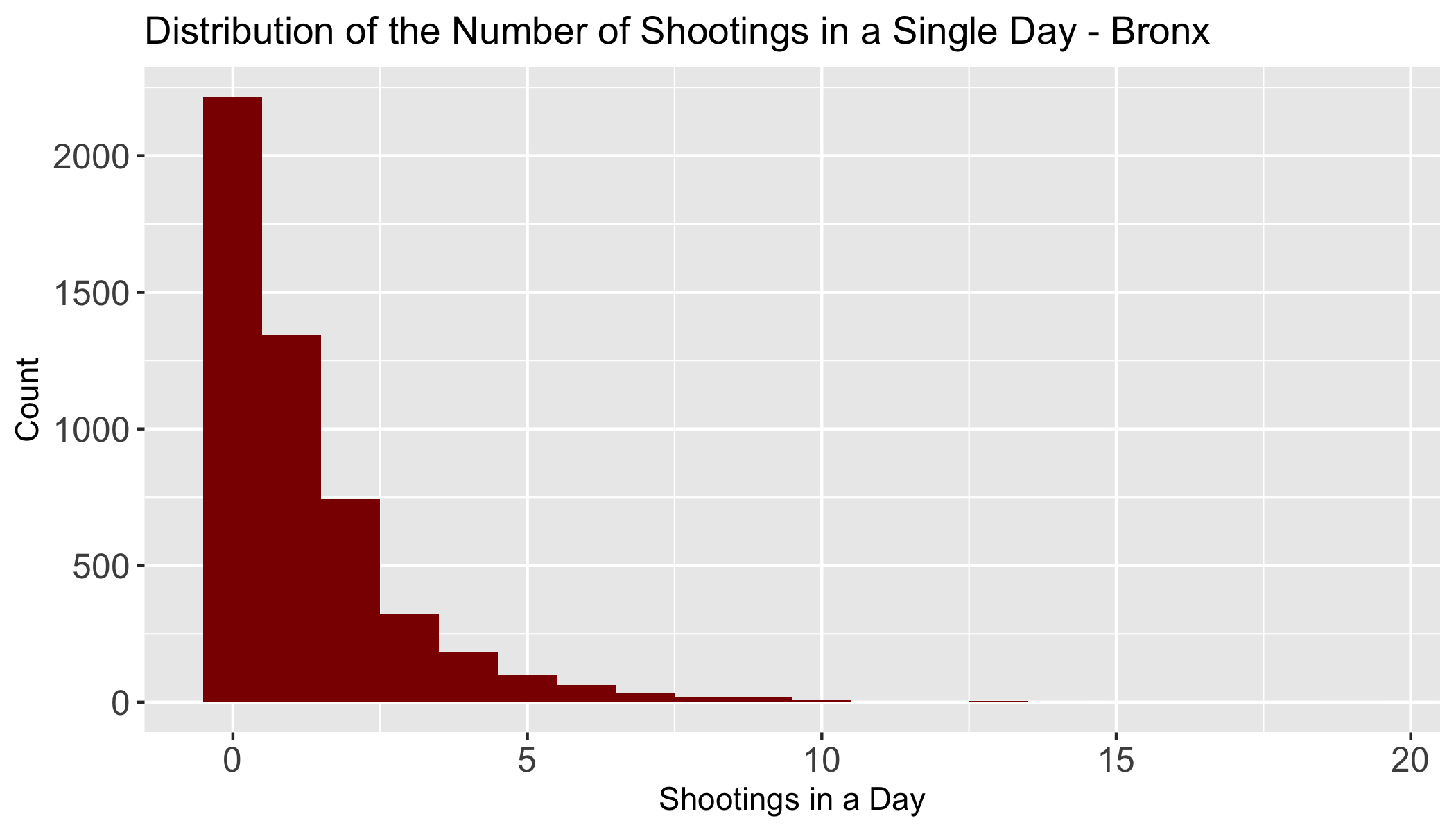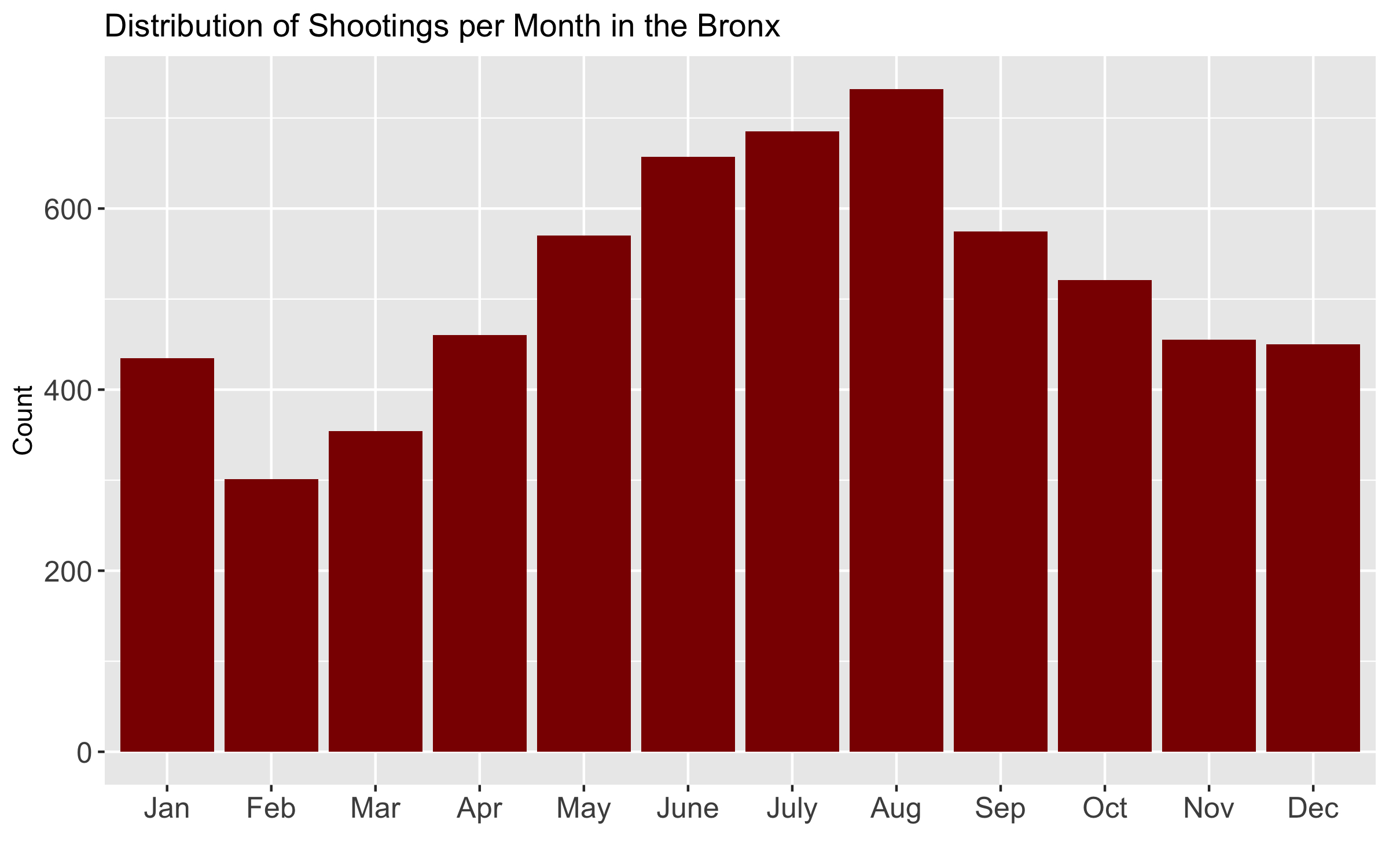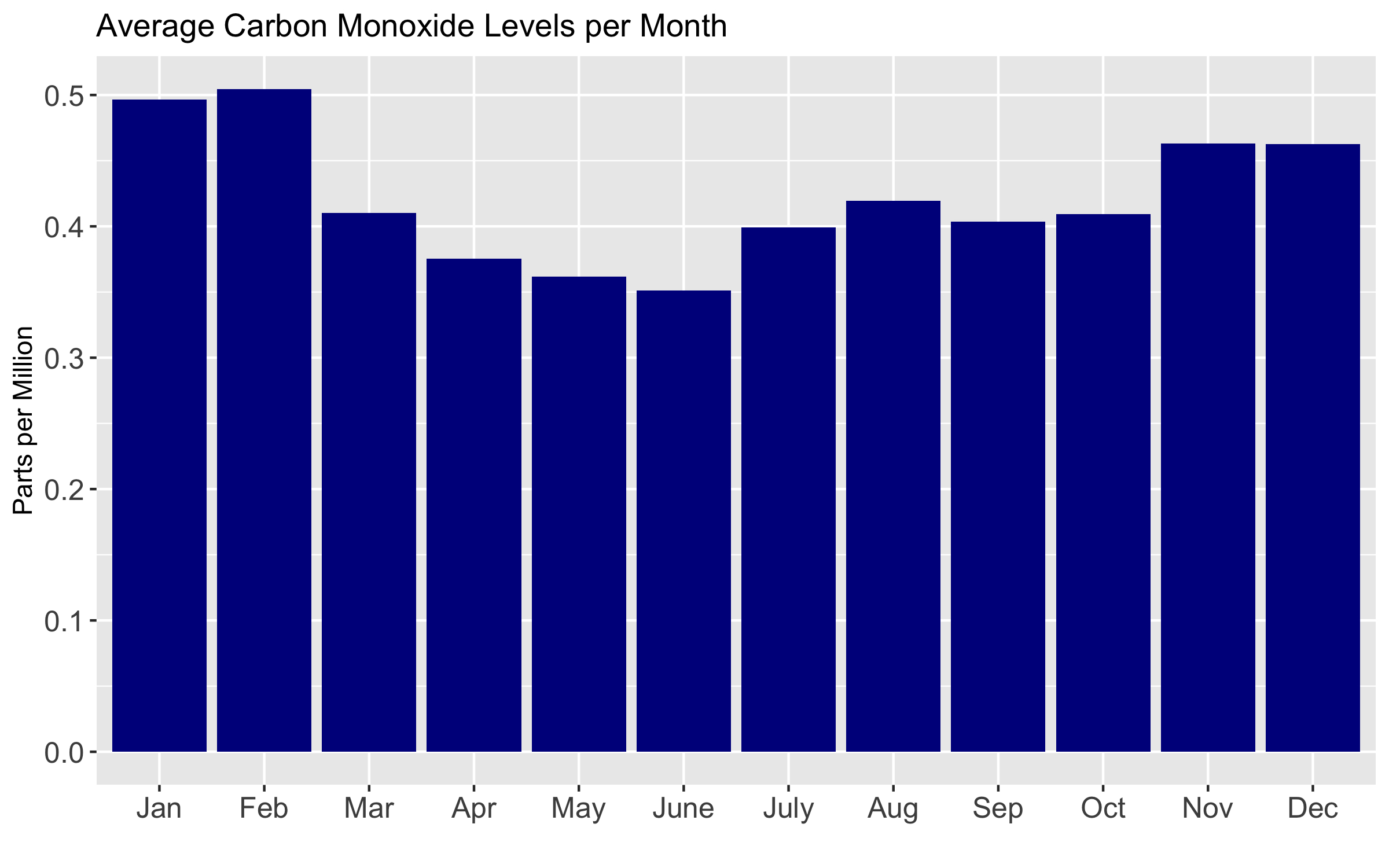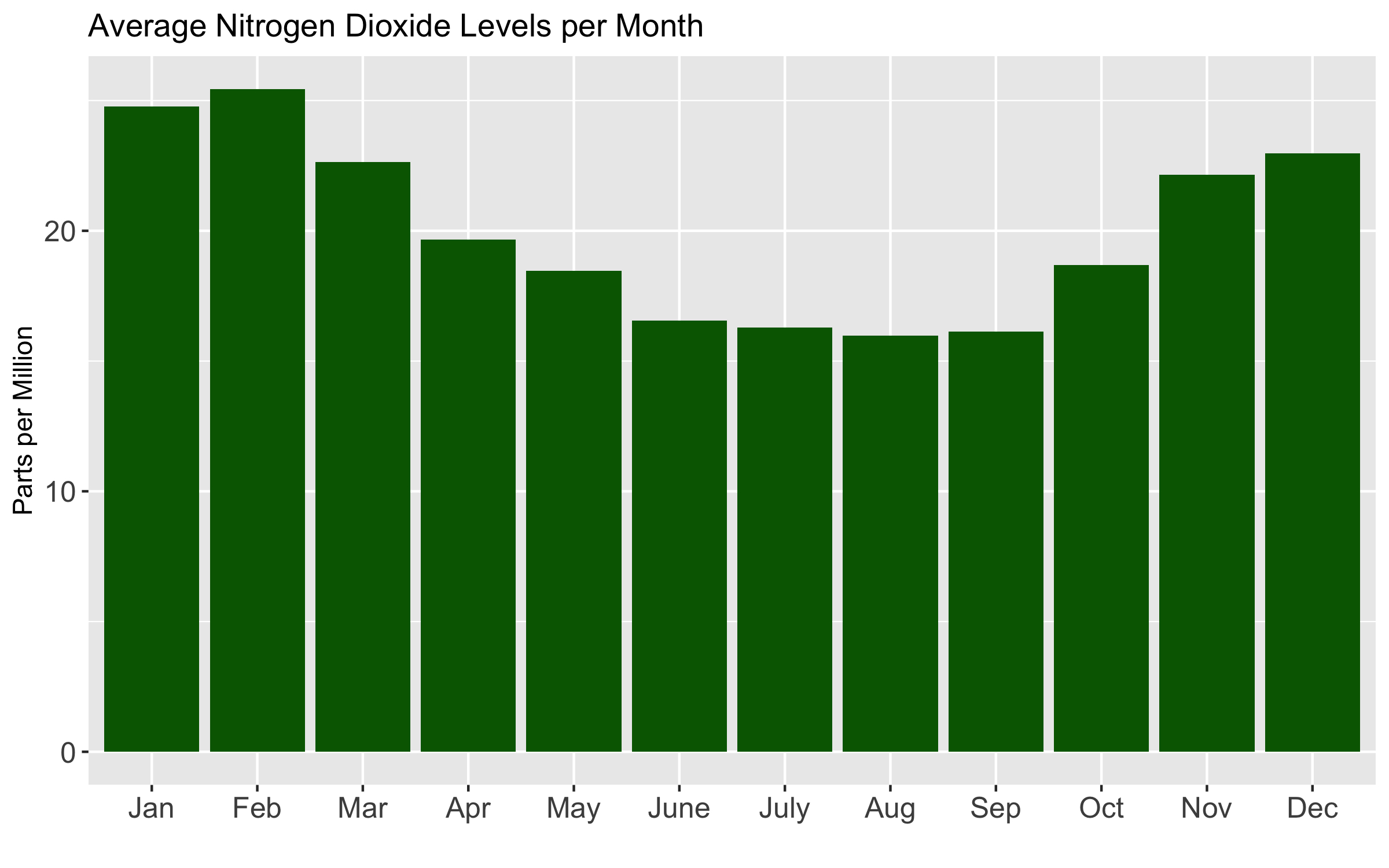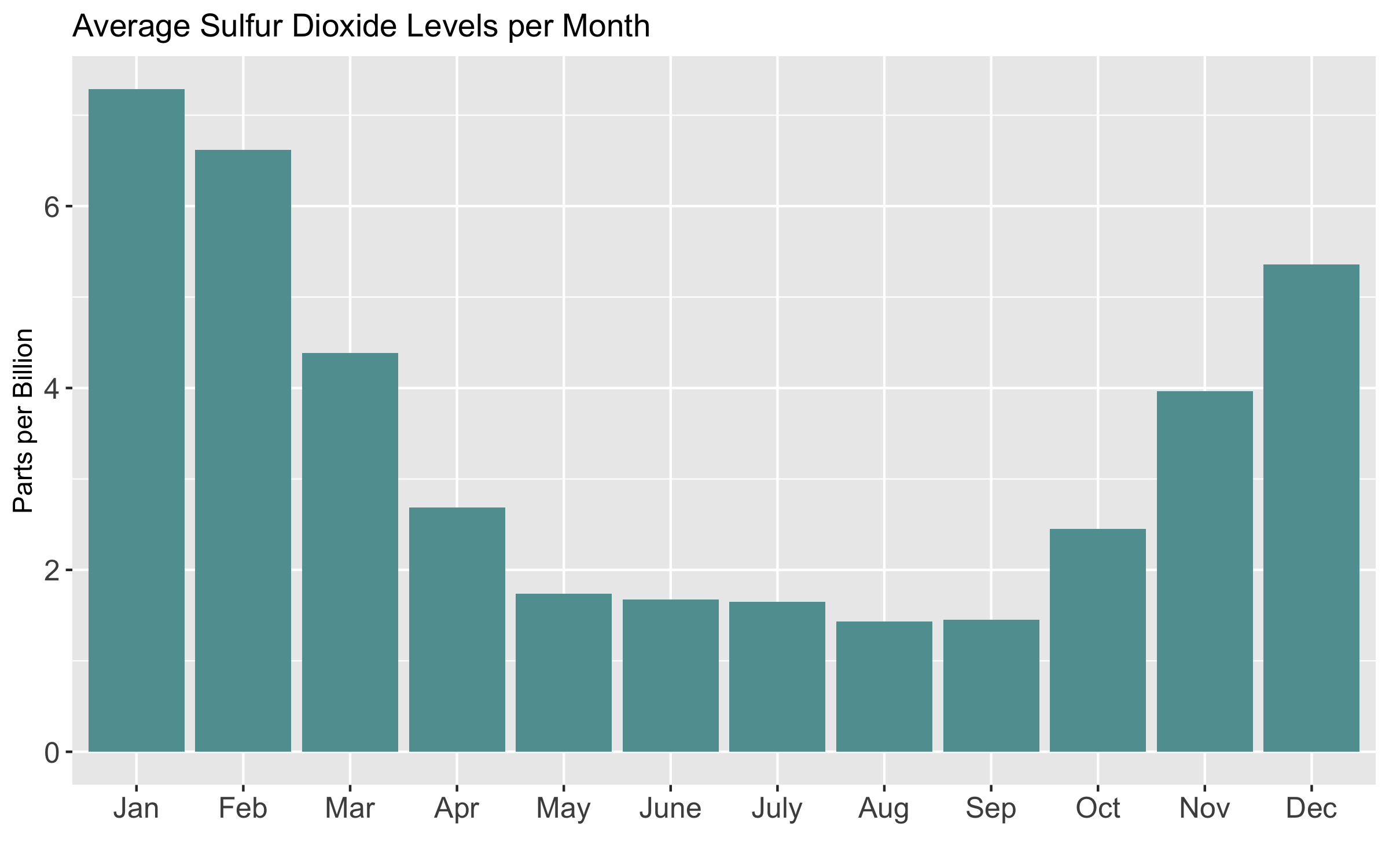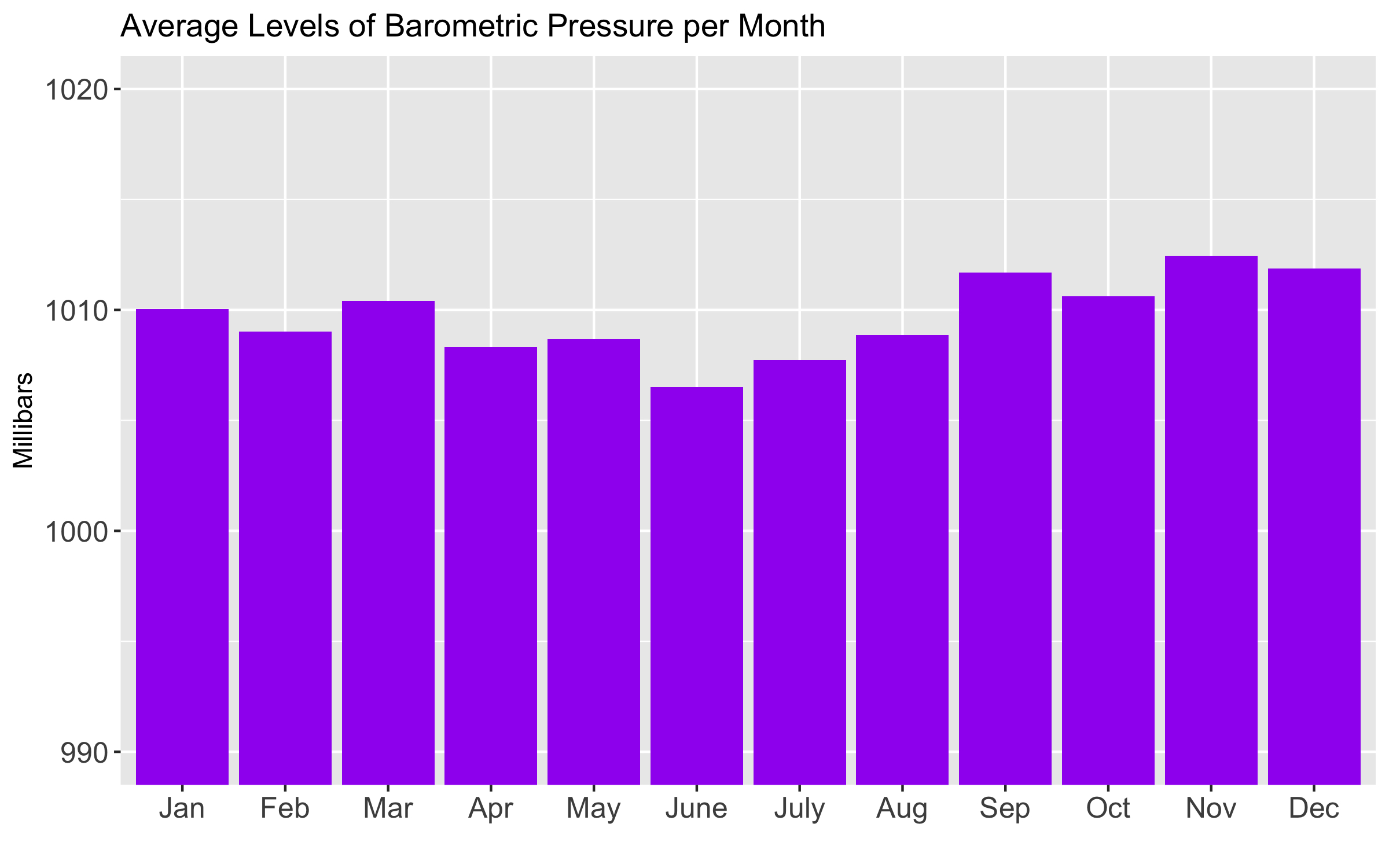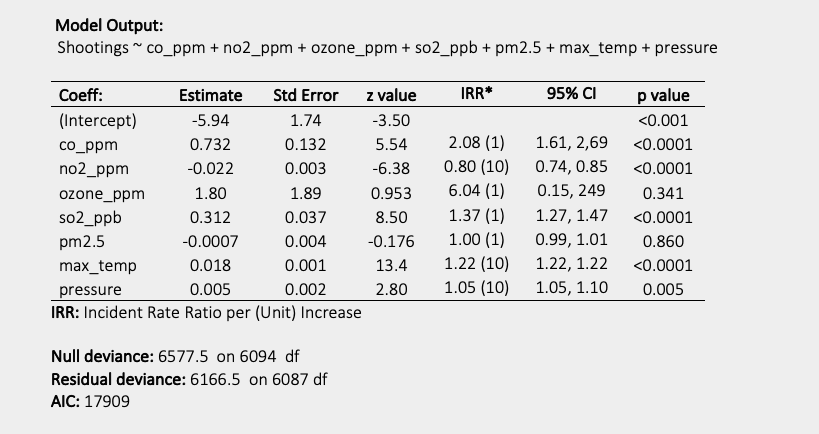All analyses done using R programming
language.
A considerable amount of research suggests that acute changes in environmental conditions (e.g. temperature, sunlight, precipitation, levels of pollution) may be associated with negative human behaviors. The mechanism of the relationship between these environmental factors and violence / impulsivity is still unknown, however it may be due to neurobiological changes caused by these factors. A small summary of research is noted below:
- Controlling for temperature and weather, changes in levels of PM2.5 and ozone across the United States show significant acute effects on violent crimes, with a particular emphasis on assaults. However, the researchers found no relationship between levels of PM2.5 or ozone and non-violent property crimes. (Burkhardt et al., 2019).
- In Southern California, long term increased exposure to PM2.5 is associated with increased adolescent delinquent behavior (Younan et al., 2018).
- Researchers found an association between acute exposure to nitrogen dioxide and PM2.5 and increased incidents of completed suicide in Salt Lake County, Utah (Bakian et al., 2014).
- When evaluating maximum daily temperature, wind speed, and precipitation in Baltimore, Maryland, maximum daily temperature was the most important weather factor associated with violence and trauma, as measured by hospital admissions and police reports (Michel et al., 2016).
-
In the city of Taipei (Taiwan), controlling for changes in weather
and unemployment, variations in ambient ozone levels
explain roughly 23% of variation in the number of suicides.
This relationship was particularly pronounced with suicide by violent
methods (Yang et al., 2011).

